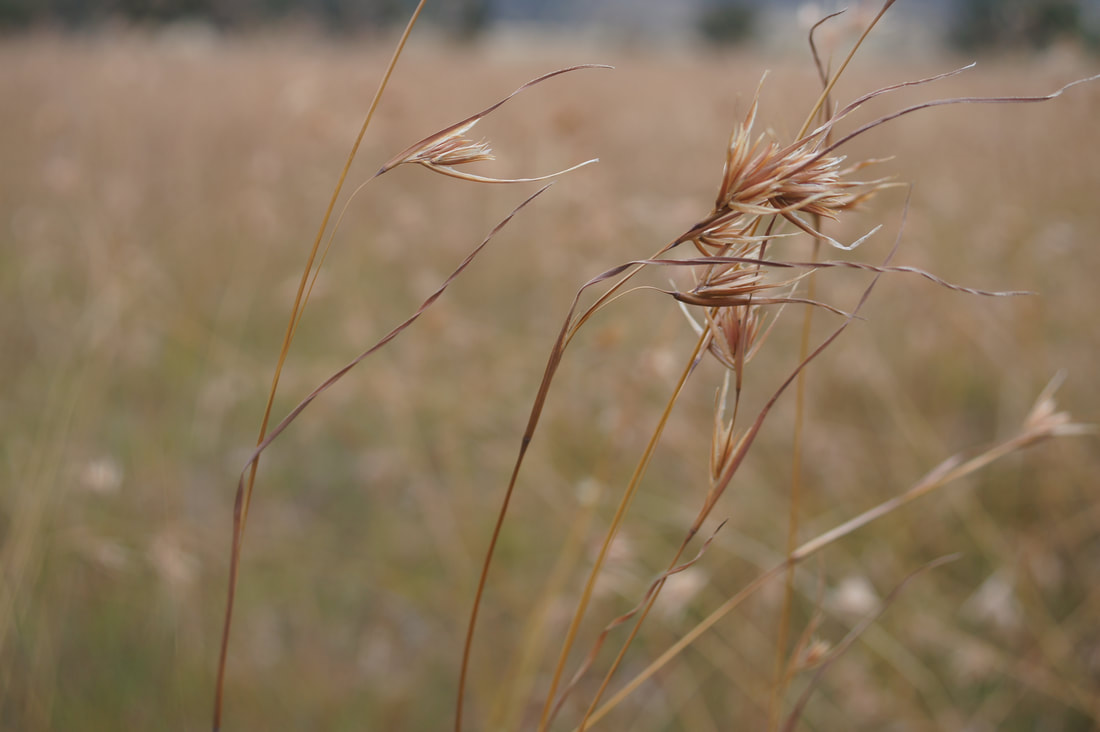A farmer in our district once said, I live in the best art gallery in the world with changing landscapes all day every day.' The Midllands is a landscape of outstanding natural beauty, a mosaic of grassland and open woodland. The native grasses are all seeding now, mostly bleached by the summer sun except for the kangaroo grass, which is a standout, gorgeous rusty colour.
But what makes these grasslands so special? A grassland is dominated by grasses, but between the grasses there is a fascinating range of tiny plants that make the grassland so desirable, and why they make this area so healthy for wildlife and sheep.
We drum into our kids the need to eat their vegetables, but wildlife and sheep have an innate knowledge about their dietary needs. No one is nagging them to eat their broccoli and just one more tint tomato. A native grassland offers all their dietary requirements because of the mix of tiny plants between the grasses, the equivalent of eating rainbow coloured vegetables on a plate. When these areas are overgrazed, the tiny plants disappear and the health of the grassland is compromised, and thus the health of the wildlife and sheep.
The tiny plants may look insignificant, but these are the plants that make the Midlands grasslands so desirable and interesting. Some of these plants are lilies including Bulbine, Chocolate, Milkmaid and Vanilla lilies. Depending on the season these lilies can give the most amazing flowering displays, the hills ablaze with colour. Others are shy, with the tiniest of flowers hiding among the grasses such as woodruff, speedwell, orchids, violets or a whole suite of pea and daisy plants.
I feel blessed to live and witness this art gallery with a landscape that's so beautiful it still takes my breath away. And each plant within this landscape brings me joy. And each plant, however seemingly insignificant, brings their own gifts and talents, to contribute to the health of the whole grassland community. And each plant has its own beauty contributing to the best art gallery in the world.
But what makes these grasslands so special? A grassland is dominated by grasses, but between the grasses there is a fascinating range of tiny plants that make the grassland so desirable, and why they make this area so healthy for wildlife and sheep.
We drum into our kids the need to eat their vegetables, but wildlife and sheep have an innate knowledge about their dietary needs. No one is nagging them to eat their broccoli and just one more tint tomato. A native grassland offers all their dietary requirements because of the mix of tiny plants between the grasses, the equivalent of eating rainbow coloured vegetables on a plate. When these areas are overgrazed, the tiny plants disappear and the health of the grassland is compromised, and thus the health of the wildlife and sheep.
The tiny plants may look insignificant, but these are the plants that make the Midlands grasslands so desirable and interesting. Some of these plants are lilies including Bulbine, Chocolate, Milkmaid and Vanilla lilies. Depending on the season these lilies can give the most amazing flowering displays, the hills ablaze with colour. Others are shy, with the tiniest of flowers hiding among the grasses such as woodruff, speedwell, orchids, violets or a whole suite of pea and daisy plants.
I feel blessed to live and witness this art gallery with a landscape that's so beautiful it still takes my breath away. And each plant within this landscape brings me joy. And each plant, however seemingly insignificant, brings their own gifts and talents, to contribute to the health of the whole grassland community. And each plant has its own beauty contributing to the best art gallery in the world.

 RSS Feed
RSS Feed